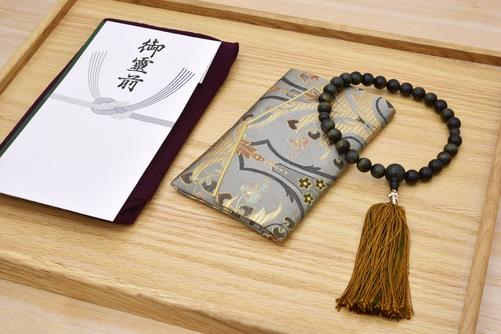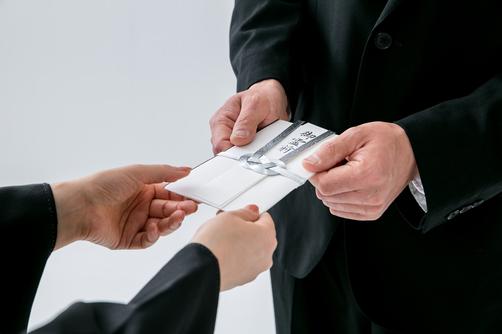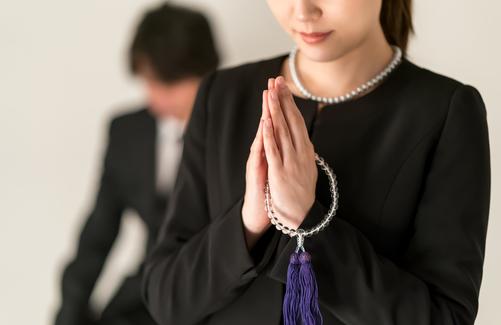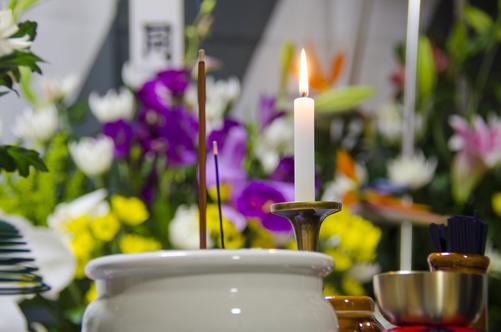Etiquette at ceremonial occasions such as weddings and funerals requires a deep understanding of Japanese culture. It is particularly important to acquire knowledge of proper etiquette at funerals, as it is difficult to simply laugh it off if you make a mistake. However, in everyday life, opportunities to attend funerals are not that common, and many people are unsure of their etiquette at such occasions.
Funeral etiquette varies depending on the religion and sect of the deceased, and is by no means simple. It requires daily preparation and consideration. Let's take a look at funeral etiquette as part of Japanese culture.
Is this bad manners? What to wear and bring to a funeral

First, let's get the basics down! What to wear to a funeral
When it comes to dressing for condolences, both men and women should wear black clothing. However, news of a death is often sudden, and it is quite possible that you will arrive on your way home from work. In particular, if you are paying a condolence visit at a wake, you may not even have time to change into mourning attire.
In such cases, it is best for men to wear black suits, ties, socks, etc., and plain white dress shirts.
For women, it is a good idea to wear a suit or dress in a black or dark shade. Also, make sure your stockings are black or a natural skin color and not too flashy.
If you choose to wear jewelry, it is considered good manners to remove any shiny or conspicuous jewelry, although it is acceptable to wear pearl jewelry.
What should children wear to a funeral?
For children, if the school has a uniform, they can wear it as formal attire. This applies to all events, including wakes, funerals, memorial services, etc. Therefore, if the school has a uniform, the concept is very simple.
If there is no uniform, you can dress appropriately by wearing a white shirt or blouse with a vest or blazer, etc. It is recommended to wear pants or a skirt in a modest color such as black, navy blue, or gray.
If you are thinking about wearing this kind of clothing when there is no uniform, you should pay attention to the color of the buttons. It is best to use buttons in as dull a color as possible, and shiny gold or silver buttons are not preferred.
When dressing for these occasions, it is important to keep in mind that shirts should be buttoned up to the top, and that girls should braid their hair if it is long and remove any hair accessories, etc. It is not considered necessary for boys to wear ties.
What else should I bring to a funeral?
One of the things you should bring to a funeral is a rosary.
Please note that borrowing and lending prayer beads is generally prohibited. Prayer beads are also used at memorial services and grave visits, so it is a good idea to have one ready just in case.
In addition, for funerals, it is best to use cool colors such as navy blue or gray for the fukusa (cloth used to wrap the condolence envelope). For celebrations such as weddings, flashy colors such as red or orange are often used, but it should be understood that these are the same fukusa but with different purposes. Also, if you happen to forget your fukusa, you can use a handkerchief or something similar as a substitute.
When it comes to bags and belts, it's best to have a matte finish, including the metal fittings. In this sense, it's best to stick to black colors and items without flashy decorations. You should be especially careful with items that have embossed fur or reptile material, as this is considered bad manners as it evokes images of killing.
Funeral etiquette: the essential "condolence money"

First of all, what does "koden" mean?
To begin with, a condolence gift is cash wrapped in an envelope called a "fukugi-bukuro," which can be easily purchased at convenience stores.
One thing to be careful about when writing condolence envelopes is that the wording on the front varies depending on the individual's religion and sect. If you are unsure of the sect, it is safe to write "Goreizan" (present in front of the spirit), but strictly speaking, depending on the sect, such wording may be considered inappropriate, so if possible, it is best to confirm the sect of the deceased when you receive the news of their death.
For example, even though it is Buddhism, the phrase "Goreizan" cannot be used in the Jodo Shinshu sect.
In Christianity, Catholics can use words like "flower offerings," but they can also use phrases like "Goreizan (presenting the deceased's spirit)." However, Protestants reject the term "Goreizan," so you need to be careful. In the case of Protestants, it is best to use "Kikyoryo (condolences)."
Market value of bills and how to insert them
The general rule of thumb is that the closer your relationship to the deceased, the higher the amount. If the deceased was your parent, the average amount is around 50,000 to 100,000 yen, and if it was a relative, the average amount is around 10,000 to 50,000 yen. If it was not a relative but a friend or acquaintance from work, it may be acceptable to give around 5,000 to 10,000 yen, and if it was just an acquaintance, around 3,000 yen.
Don't be in a rush for a funeral! Things you should know now about funeral etiquette

The general procedure for offering incense is to bow when it is your turn, burn the incense, then bow once more towards the altar, and finally bow silently again towards your relatives and priests. However, it is also true that there are minor differences depending on the religion and sect. When using incense, it is considered good etiquette to extinguish the flame with your hand, and not to blow on it. In Christianity, flowers are sometimes used instead of incense, and there are various ways to do it. If possible, it is a good idea to attend the funeral first and observe how others are doing it before it is your turn.
If you absolutely cannot attend the wake or funeral and are unable to offer incense, you can send a condolence telegram first, and then later send a registered cash letter with a condolence gift. If you send it by mail, make sure to address it to the chief mourner or a close relative; it is considered bad manners to address it to the deceased. You should be very careful about this point.
summary

Funeral etiquette is not easy, as it involves many very detailed matters and varies depending on religion and sect. Furthermore, since news of a death can come suddenly, it is important to prepare in advance. It is a good idea to start by following common sense rules that apply regardless of religion or sect, such as dress and grooming in black and avoiding anything flashy.
Also, rather than just focusing on formal rules, try to be considerate towards the deceased and the relatives who will be holding the funeral.
This article has been partially re-edited by KARUTA from an article originally published on "Nihongo Biyori."
Any unauthorized reproduction or use of the contents, text, images, illustrations, etc. of this website is strictly prohibited.
